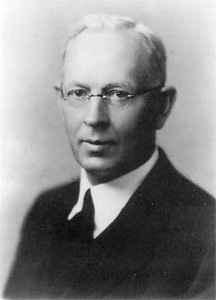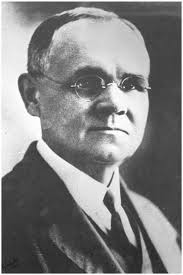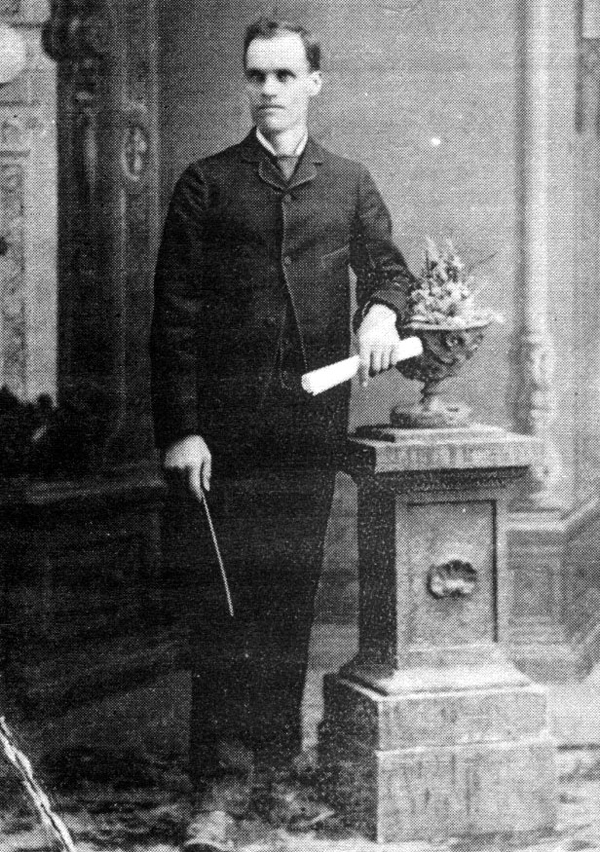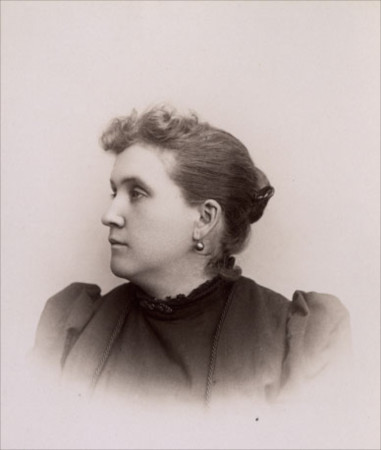Joseph Fielding Smith stood at the Tabernacle pulpit
In Salt Lake City on the second day of General Conference in April 1920. “One theme has stood out very prominently, and properly so,” he said. “That has been the subject of the great vision given to the Prophet Joseph Smith.”


Elder Smith had just listened to the scientist James Talmage, a fellow apostle who sometimes disagreed with Elder Smith’s views. “You know the story, I know,” Elder Talmage had said, “but it is well sometimes to be reminded of what we know.” He told the story of the first vision again and said that because of it The Church of Jesus Christ of Latter-day Saints “stands aloof and alone.” Elders Smith and Talmage agreed heartily that day.
That evening Latter-day Saints packed the tabernacle again
Filling every seat and some of the aisles. Evan Stephens, Welsh-born director of the Mormon Tabernacle Choir until 1916, returned to the rostrum after four years of feeling he had “been upon the shelf as a worn out vessel.” Now he was back in the conductor’s spot that had been his for a quarter century, leading the choir in his cantata, The Vision.

Church President Heber J. Grant thought the performance was a “regular triumph.” So did Samuel Mitton. He had first attended Conference as a teenager in October 1880, when Joseph Smith’s First Vision was canonized in the Pearl of Great Price. Samuel had loved the tabernacle organ and choir and listening to Orson Pratt relate the vision. Now in his mid-fifties, an admirer and friend of Evan Stephens, and director of the saints’ choir in Cache Valley to the north, Samuel noted in his journal each part that was sung, the sermon on “the vision of the Father and Son,” and the singer who played Joseph Smith. He summed up the experience as “the greatest music I ever heard.”
The April 1920 General Conference
Together with that month’s issues of the Improvement Era and Young Woman’s Journal, were just the beginning. The Mutual Improvement Association commemorated Joseph Smith’s first vision church-wide on May 1. Young saints in California performed music and gave speeches.
In Provo, Utah, students and faculty from the sixth grade through college shared testimonials. “Joseph Smith’s first prayer proves to me that there must be a Mother in Heaven,” said seventh-grader Inez Taylor, perhaps taking her cue from Susa Young Gates’s recent article, “for if there is a Father and Son, there must be a Mother.”

These statements are precious. For the first time in the historical record, young saints—some very young—described how the first vision resonated with them. Printed beside their professors’ comparatively didactic statements, the students’ told “what the first vision has done for me,” and “what the first vision means to me,” and “how the prophet’s vision has affected my life.”
Several students linked their identity to the First vision
None more cogently than Mildred Boyer, a student at Brigham Young University. She said the vision began the movement that led her future mother to migrate from Europe to America, where she married a man “whose parents pulled a handcart across the plains of America because of that same wonderful revelation. . . . Through the vision of that unlearned boy, who knelt in humble prayer before his Maker, I bear testimony that I am what I am. The glory of God has been engraved in my heart, and belief in the truths of His Gospel has caused me to rejoice, and to go ever onward and upward to a higher and nobler plane. I have learned to have faith in a living God who loves all men and is never known to desert them when in need. I have learned that it is better to walk with Him in the dark, that to attempt to find my way alone in the light.”
The youth in Provo made Joseph Smith’s first vision their own. They performed The Return of Truth Triumphant: A Pageant of the Restored Gospel, in which one of them acting as “the boy prophet” took center stage, while many others formed the chorus and supporting cast.
After five weeks of rehearsal in Logan
Samuel Mitton’s choir of 160 singers performed The Vision. “Oh how grateful I feel,” he noted in his journal, to have the privilege of singing this great composition of so great an event—and on the 100th anniversary of the time when the Vision was given to Joseph the prophet.”
Barring some miraculous intervention, I won't be making any beautiful music for the bicentennial. I sure feel akin, however, to the saints a century ago who were thrilled to testify one way or another of what it meant to them. Subscribe if you feel the same way, or if just want to learn more about the vision. Soon I'll start a series of bi-weekly posts that explore Joseph Smith's first vision from every angle.
The post (Bi)centennial of Joseph Smith’s First Vision, Part 2 appeared first on Steven C. Harper.
Continue reading at the original source →



